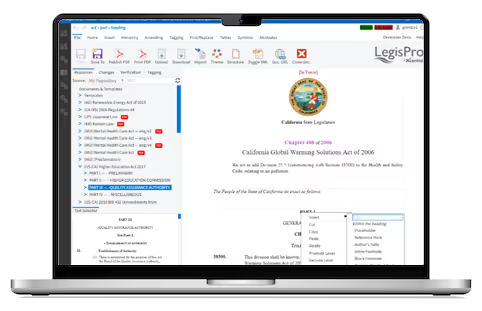Draft with Precision
Draft with precision in a collaborative and intuitive interface. Templates keep you focused on content, not structure. LegisPro controls the details.
Automate for Efficiency
LegisPro tracks citations, metadata, and workflow; enabling powerful document automation for efficiency and precision. Drafting, amending, publishing, and consolidating workflows can be automated with LegisPro.




























